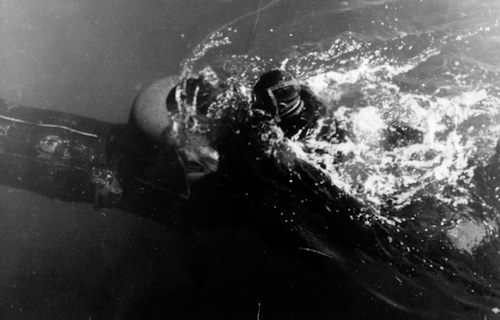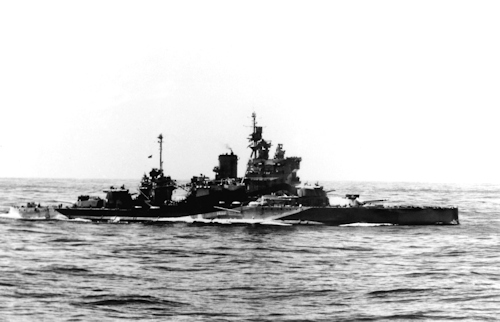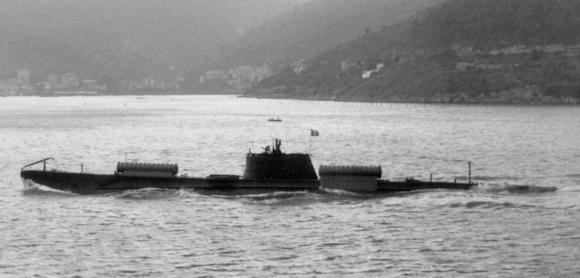December 18, 1941 - Eastern Mediterranean - 18.40 pm, the Italian submarine Scirè it reached the established point, 1,3 miles by 356 ° from the light of the west pier of the port of Alexandria, at a depth of 15 meters. The final phase of the GA3 operation began.
Lo Scirè, as per the order of operation, he had given up his moorings in La Spezia on the previous December 3, simulating an exit for exercise but, at dusk, he had embarked, in complete secrecy, three "Slow Racing Torpedoes", the so-called "pigs" (marked with numbers 221, 222 and 223), in the three watertight cylinders specially installed on deck. Back at sea, the order for the commander, captain of frigate JV Borghese, had been to reach Lero, where he would have to rejoin the operators of the assault vehicles and wait for the order to leave for Alexandria.
The December 9, the Scirè moored in Porto Lago (Lero Island) where the 12 next December, the stormers who had come from Italy via Rhodes.
After waiting for a few days for the results of aerial surveys on Alexandria, the December 14 Scirè he was ordered to take the sea to start the GA3 operation.
The navigation to the Egyptian coasts had entailed many difficulties due to adverse weather conditions and it was only in the afternoon of the 17th that the commander of the X MAS flotilla, frigate captain Ernesto Forza, based on the results of the aerial reconnaissance, could report to the commander of the Scirè the presence of two battleships in port and calm sea along the Egyptian coasts.
 In the afternoon of December 18, the Scirè, in view of the coast, began the hidden approach to the enemy base. At 20.47, escaping British vigilance and defensive minefields, the release of the three "pigs" began to surface. At the agreed signal, the three assault vehicles headed towards Alexandria and the submarine resumed navigation on the way back, aiming first on Lero, and then continued, after a brief stop, towards the base of La Spezia, where the 29 will arrive unharmed December.
In the afternoon of December 18, the Scirè, in view of the coast, began the hidden approach to the enemy base. At 20.47, escaping British vigilance and defensive minefields, the release of the three "pigs" began to surface. At the agreed signal, the three assault vehicles headed towards Alexandria and the submarine resumed navigation on the way back, aiming first on Lero, and then continued, after a brief stop, towards the base of La Spezia, where the 29 will arrive unharmed December.
The sea was calm and there was no wind. No signs of alarm from the enemy base. The six men of the assault group, divided into three pairs, proceeded towards the objectives: the lieutenant Luigi Durand de la Penne with the diver chief Emilio Bianchi, the captain of the Naval Engineers Antonio Marceglia with the diver sub-chief Spartaco Schergat, the Captain of the Naval Arms Vincenzo Martellotta with the diving chief Mario Marino set out to carry out a legendary enterprise in the history of our Navy and in the naval one of all times.
Everything proceeded according to plan; when now the operators were about to face the most difficult obstacle, constituted by the barrier network that closed the access to the base, the good luck gave them. In fact, shortly after midnight, a mobile section of the network had been opened, to allow the entry into port of some British destroyers returning from a mission.
Carried in the wake of the British torpedoes, the "pigs" penetrated the port of Alexandria and began the final approach towards the objectives.
 The unit assigned to the crew Durand de la Penne-Bianchi was the battleship Valiant (photo), moored at the sister's bow Queen Elizabeth, in the water mirror facing the petroli quay.
The unit assigned to the crew Durand de la Penne-Bianchi was the battleship Valiant (photo), moored at the sister's bow Queen Elizabeth, in the water mirror facing the petroli quay.
After the last obstruction, shortly after the 02.00 19 December operators plunged the "pig" to get under the hull of the Valiant, but the underwater vehicle, hit the hull, while the operators were looking for the ship's rolling flap to fix the explosive charge, it was flooded losing altitude, thus leaning on the muddy bottom a few meters away from the ship. Durand de la Penne managed to ascend to the surface, making sure that he was on the cross of the forward towers of the English unit. Back in the depths Durand de la Penne tried to restart the device without succeeding. He therefore asked Bianchi to inspect the propellers to check for any impediments. In carrying out this operation, the second man, due to a failure in his scuba-breathing apparatus, was seized by malaise and, while trying to get back to the surface, he was losing his senses.
Durand de la Penne, who was left alone, dragged the apparatus to the hull of the British armor for a long, long time. Activated the fuses of the explosive charge and covered with mud the dashboard to prevent the brightness of the instruments could indicate the position in case of any research, Durand de la Penne went up to the surface where it was identified by the guards and, signaled by some gunfire, took refuge on the mooring buoy of the battleship where he finds his second.












